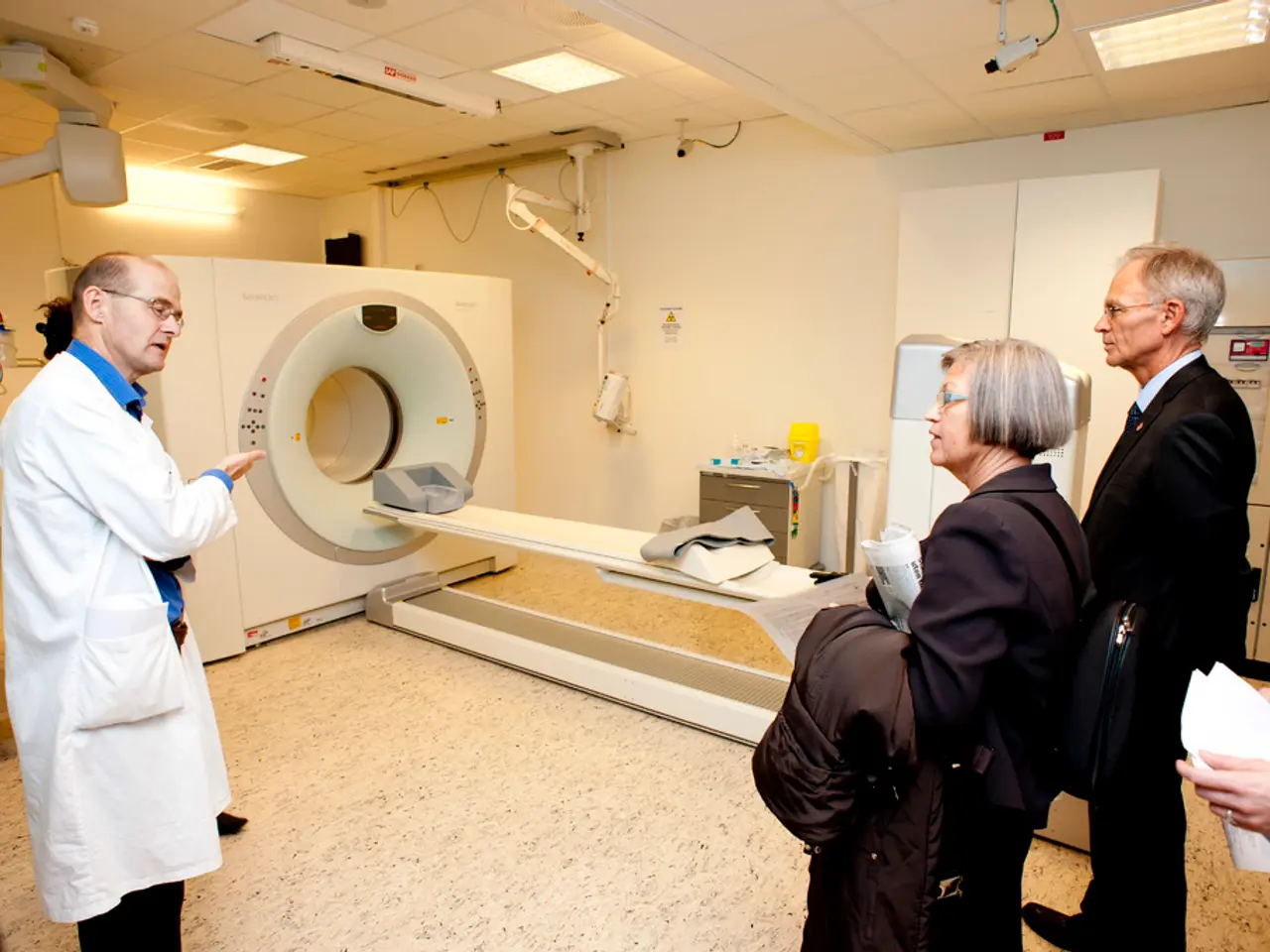Laryngeal Cancer: Examining with Radiographic Tests and Beyond
In the world of diagnosing and treating laryngeal carcinoma, a variety of radiology tests play a crucial role. These tests are employed for staging, treatment planning, monitoring progress, and detecting recurrence of the disease.
One of the most common tests is the Computed Tomography (CT) scan, which is often used initially to assess the primary laryngeal tumor extent, airway involvement, and regional cervical lymphadenopathy. CT scans help in tumor localization and nodal staging.
Magnetic Resonance Imaging (MRI) is another essential tool, providing superior soft tissue contrast that allows for more accurate evaluation of tumor extent, perineural invasion, cartilage invasion, and deep tissue involvement. MRI is particularly useful when evaluating distant metastatic sites such as the brain, especially when neurological symptoms occur.
The 18F-Fluorodeoxyglucose Positron Emission Tomography/CT (FDG-PET/CT) is also a valuable resource for detecting metastatic disease, staging, assessing treatment response, and surveillance for cancer recurrence in laryngeal carcinoma.
While less common, nuclear medicine scans and MRI may be used to complement the above, especially for detailed brain evaluation if metastasis is suspected.
The selection of these imaging modalities is based on the clinical scenario. CT and MRI are primarily used for initial staging and local evaluation, PET/CT for systemic staging and monitoring response or recurrence, and MRI for detailed soft tissue and brain metastatic workup when indicated.
In summary, CT and MRI are primarily used for local staging, PET/CT for comprehensive systemic evaluation, MRI for detailed soft tissue and brain metastatic workup, and PET/CT for monitoring response or recurrence.
Beyond these radiology tests, other diagnostic tests for laryngeal cancer include laryngoscopy, panendoscopy, and biopsies. Laryngeal cancers can affect the supraglottic or glottic parts of the larynx, with glottic being the most common and having the best outlook.
Preparation for these radiology tests may include avoiding food or drink for 2 hours or more, removing jewelry, informing doctors about potential allergies to contrast dyes, and taking a relaxant for those with claustrophobia.
These tests are instrumental in helping doctors identify if and how far laryngeal cancer has spread, predict progression-free survival, and check for any signs of the cancer returning after treatment. Common signs of laryngeal cancer include sore throat, coughing up blood, ear pain, difficulty swallowing, a lump in the neck, and voice changes.
Sources: [1] RadiologyInfo.org. (2021). Laryngeal Cancer Imaging. [online] Available at: https://radiologyinfo.org/en/info/laryngeal-cancer-imaging
[2] American Cancer Society. (2021). Laryngeal Cancer Staging. [online] Available at: https://www.cancer.org/cancer/laryngeal-cancer/detection-diagnosis-staging/staging.html
[4] UpToDate. (2021). Laryngeal cancer - Diagnosis. [online] Available at: https://www.uptodate.com/contents/laryngeal-cancer-diagnosis
- In the realm of cancer, specifically laryngeal carcinoma, science advances with various radiology tests, serving crucial roles in staging, treatment planning, monitoring progress, and detecting recurrence of the disease.
- CT scans, a common test, aid in assessing the laryngeal tumor's extent, airway involvement, and cervical lymphadenopathy, all of which are essential for tumor localization and nodal staging.
- MRI, another essential tool, offers superior soft tissue contrast, allowing for more accurate evaluation of tumor extent, perineural invasion, cartilage invasion, and deep tissue involvement.
- PET/CT, a valuable resource, is used for detecting metastatic disease, staging, assessing treatment response, and surveillance for recurrence in laryngeal carcinoma.
- Beyond radiology tests, other diagnostic tests for laryngeal cancer, such as laryngoscopy, panendoscopy, and biopsies, are instrumental in helping doctors identify the spread, progression, and possible recurrence of the chronic disease.




